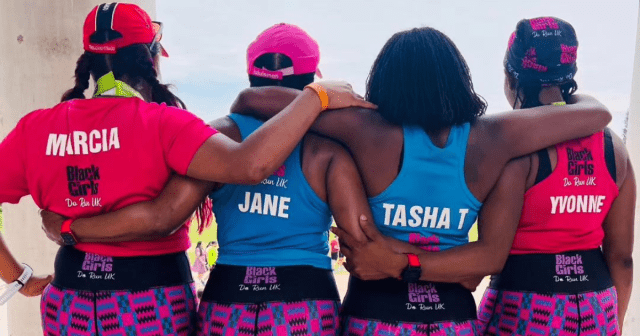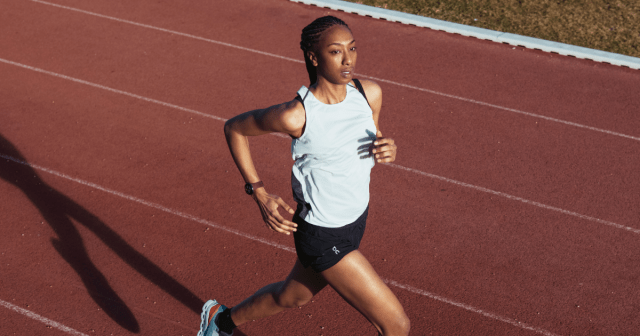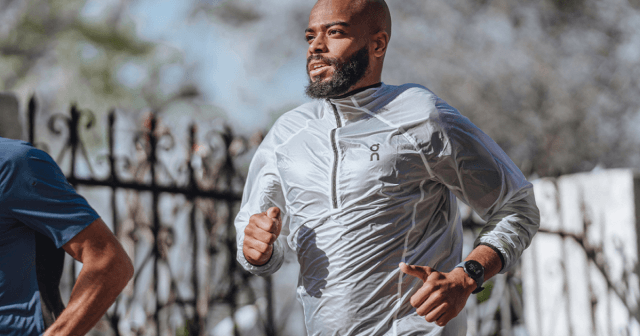Whether you’re recovering from an injury, want to build strength to increase your speed, or are just looking for a way to mix up your training to stay mentally fresh, cycling can be a useful cross-training activity for runners of all levels.
From building your aerobic base to recovering from a hard run, these three cycling workouts for runners are a great way to supplement your training regimen and give your running performance a boost when your training routine is stuck in a rut.
Considerations Before You Get Started
While you’ll definitely need basic cycling gear, like a helmet, shoes, and cycling-specific clothing, a multi-sport smartwatch or even a dedicated cycling computer is recommended.
Since the workouts below are designed to target a desired training effect, monitoring your heart rate while you’re running and cycling will help you stay in the correct training zone. This will make it easier to build your fitness, prevent overtraining, and keep track of your fitness progress so you can adjust your training schedule as necessary.
In addition to heart rate training zones, GPS cycling computers and multisport watches can provide other important metrics such as:
- VO2 max
- Smart calories
- Overall training benefit from a workout
- Training load
- Sleep analysis
- Speed, pace, and distance
- Cycling cadence
- Power metrics
The Long Ride
Whether you’re training for a 5K or an ultra-marathon, building a solid aerobic base will improve your performance. One of the great things about cycling is that it’s much easier to exercise at lower-intensity levels for long periods of time. While running for four to six hours once per week might not be realistic, it’s completely doable on the bike.
Cycling workouts for runners can help to develop your endurance while also minimizing the risk for injury since it’s generally considered low-impact and much easier on the joints compared to running. You’ll also build strength during the long ride and use a variety of muscle groups that will complement your running strength and speed.
Solo Ride Workout
Either with a cycling group, a few friends, or solo, plan a route that will take one to three hours to complete.
Choosing a route with a mix of flat roads, steep climbs, and rolling hills is ideal, but this doesn’t matter as much as keeping your heart rate in the desired training zone.
Try also to use a cycling cadence above 90 revolutions per minute (rpm), which will help to keep your muscles from fatiguing over long distances and be more beneficial to building cardiovascular fitness.
For this type of effort, you’ll want to keep your heart rate in zone 2 & 3, avoiding letting it rise into zone 4 even during climbs. The focus here is on building aerobic fitness.
As your fitness improves and you get more comfortable spending time on the bike, these group or solo efforts can increase into the five- to six-hour range.
The Recovery Ride
Short, slow runs following harder efforts are often scheduled in a training plan to get a few more miles in as you recover. But sometimes too many of these miles won’t allow you to recover properly and can lead to injury.
Instead, recovering on the bike is an excellent option to loosen up sore muscles and prevent further stress to your joints while you still get some cardiovascular benefits.
Following your next long run or interval session, give this recovery ride a try.
Recovery Ride Workout
Either on a mostly flat route in your area or on the indoor trainer, ride for 45 minutes to one hour, staying in heart rate zone 1 and 2.
This ride should be easy enough to carry on a conversation with another cyclist at all times while concentrating on keeping the gearing very easy.
A high cadence above 90 RPMs will help to move blood through the muscles to flush the legs of waste products that often cause soreness and stiffness following harder workouts.
Since this effort is almost twice as long as a recovery run, it can have some benefit on your cardiovascular fitness as well.
Big-Gear Intervals
In some ways, cycling can be a lot like going to the gym for runners. The quads, glutes, and core muscles are all used a bit more to spin the pedals than they are when you run, and building strength in these muscle groups can translate to a quicker stride and increased speed.
While there are a ton of cycling workouts for runners to build strength, I like this big-gear interval session because it’s short and will help improve your VO2 max as well.
Big-gear intervals workout
For this interval session, you can choose between a stationary bike at the gym, an indoor trainer, or a short hill in the neighborhood that takes you about three to five minutes from the start of the climb to the top.
Following an easy 10- to 15-minute warmup, complete three to four sets of three- to five-minute intervals.
Use gearing that allows for a cadence in the 60 to 65 rpm range, with each effort in heart rate zone 4.
Following each interval, recover with easy spinning for three minutes. After your main set is complete, cool down with easy spinning for another 10 to 15 minutes.
If you liked this post, don’t forget to share so that others can find it, too.
Or give it a thumbs up!
I like this article
Please note that the information provided in the Polar Blog articles cannot replace individual advice from health professionals. Please consult your physician before starting a new fitness program.




